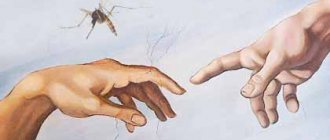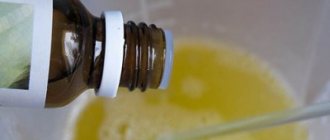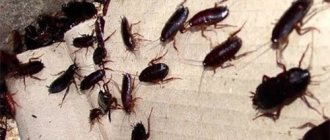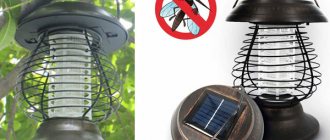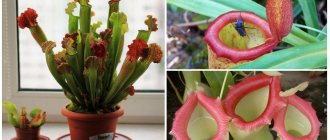Characteristics of insects
There are several thousand species of flies in nature. Most of them cause harm to humans:
- bites and drinks blood;
- spoils food;
- becomes a spreader of serious diseases.
Regardless of the species, the fly has a head with compound eyes. Body covered with coarse hairs (sometimes without them) and abdomen. There are 2 pairs of wings on the back. Some are for flight, the second are halteres, for coordination in space.
About 90% of flies lay eggs, the remaining 10% are viviparous, that is, they “give birth” to larvae. In the first case, offspring appear after 3-14 days, depending on the species and climatic changes.
The larvae feed on decaying foods and plants. A typical representative found in homes and gardens includes:
- house fly;
- Drosophila;
- horsefly;
- carrion fly;
- whitefly
Whatever insect enters the garden or apartment, you need to get rid of it. This can be done using essential oil (EO).
Spices
If it is not possible to grow plants, homemade spices can help get rid of flies in your apartment. Many of them are the same aromatic plants from the dacha, but in dried form. The effect of dry spices is much weaker and insects, in case of severe need, ignore the smell of bay leaves. Except that they don’t land on the spices themselves, but they fly around the kitchen calmly.
It is possible to achieve “decent behavior” from dipterans with the help of products that do not grow in Russian gardens: lemon and cloves.
Lemon with cloves against flies
Cloves have a very strong spicy smell and a large amount of essential oils. Even when dried, it releases enough phytoncides to repel insects.
The repeller is easy to make: stick 6-8 clove buds into half a lemon. This mixture of scents is a very effective remedy. But you need to change the lemon every 3-4 days.
If a homemade fumigator begins to smell strongly, the repeller must be thrown away and a new one made. Such a strong smell means that the lemon has begun to rot and mold.
Where do flies come from in the house?
Spring is coming. The air temperature rises above 10 - 12°C, and flies that hid in cracks or other places in the house during the onset of cold weather begin to awaken from their winter hibernation. With the onset of warmth, they leave their shelter in search of food.
Due to the grid vision, flies do not see a transparent obstacle (window glass), so it is quite difficult for them to fly back out. The insects remain in the house and begin to breed.
The fly can lay its eggs on food, animal excrement, in trash cans, etc. Thus, there are more and more of them. Their eggs end up in human food, causing severe poisoning. In addition, their paws can carry deadly diseases such as typhoid, cholera, anthrax or tuberculosis. Flies cannot be controlled. As soon as they sit down on food once, pathogenic microbes immediately begin to spread. To avoid this, you should never leave open food, and after eating you must put leftovers in the refrigerator.
In addition, flies can be brought into the house along with spoiled food. Most often this happens among summer residents. During the harvesting process, you may come across a slightly spoiled fruit, where flies like to lay eggs. A person brings it into the house and in the warmth of the masonry, full-fledged representatives of this buzzing family very quickly appear.
There are especially many flies near large landfills, compost heaps and outdoor toilets. If human housing is located near these places, the presence of insects in the house is guaranteed. In this case, it is much more difficult to fight them. Keeping animals in the yard can bring the same inconvenience.
Mosquito nets are a salvation from these insects in private homes and cottages. Moreover, they should be not only on the windows, but also on the entrance doors.
These insects can also enter apartments through ventilation ducts and garbage chutes.
The real boom in the appearance of flies occurs in late August - early September. When it gets cold outside, insects flock to a person’s home in search of warmth, where they also lay eggs and go into suspended animation until spring. This is repeated year after year.
In order to facilitate the fight against them, it is necessary, first of all, to take all necessary preventive measures to ensure that there are as few representatives of these insects as possible and getting rid of them is not difficult.
What attracts flies?
Flies live and breed in the private sector - in a country house, in a country house, on a farm. They cause irritation, a feeling of disgust and disgust. But before you try to get rid of uninvited guests, you need to understand what attracts them to our homes:
- free access to food and scraps;
- open trash cans;
- dirty dishes;
- garbage and dirt in the house;
- an uncleaned litter box for a pet;
- compost heaps and cesspools in the yard;
- cowsheds and pigsties within 200 meters of your property.
In order to rid your home of these annoying “inhabitants”, you should, first of all, eliminate areas of spread of food debris
What is the danger of flies
Everything would not be so bad if the essence of the problem was only psychological discomfort. However, we should not forget that flies are not such harmless insects, because on their paws they are capable of carrying thousands of bacteria that cause various serious diseases: helminthiasis, diphtheria, tuberculosis, cholera, anthrax, conjunctivitis, dysentery, salmonellosis, typhus and typhoid fever .
These insects are carriers of such epidemiological diseases for the simple reason that their favorite habitat is feces, compost pits, garbage dumps, and decomposing animal corpses. After walking through all these unpleasant places, flies enter a person’s house, sit on food left on the table, on fruit lying in a vase, on jam not covered by a saucer.
And here another health hazard arises: a fly can not only infect food with bacteria, it can lay larvae, which will later enter the human body along with food, which is fraught with skin, gastrointestinal and genitourinary diseases. In addition, some individuals can inflict bites that cause a strong irritant reaction on the skin.
Repellent plants for annoying flies
Herbs that repel flies
In the fight against flying pests in an open area, in an apartment, in a house, repellent plant crops will be good allies.
They have a pungent odor that repels or confuses flies. Phytoncides released into the environment have a depressing and irritating effect on insects. They will not be able to live next to such plants, so they will quickly leave the area. Plants that effectively repel flies can be used in different ways.
Tansy to repel flies
Tansy against flies is an effective plant that can quickly and permanently rid a person of the presence of annoying buzzing insects.
Flies (as well as fleas, bedbugs and moths) will be driven out of the apartment by flowering bunches of fragrant grass and bait based on it, for the preparation of which the dried flowers of the plant need to be ground and applied to strips of thick paper, previously greased with wood glue or starch paste. The resulting baits with dried glue need to be hung near doors and windows.
Chemistry has the last word
And finally, if you have tried a lot of things, but flies continue to bother you, do not despair: they are all afraid of specific chemical aromas. And they have quite a lot of substances available to anyone - ammonia, vinegar, creolin and others.
For example, if you are going on a picnic and annoying insects are haunting you, you can spray ammonia around the campsite. And for summer residents, the advice would be this: dissolve 50 ml of ammonia in 4-5 liters of clean water and spray the borders of the beds with this solution, of course, avoiding getting the substance on the plants. In addition to the fact that you will forget about flies for a long time, it will also be a useful fertilizer for plants - a typical nitrogen fertilizer.
Similarly, you can make a solution with ordinary vinegar or vinegar essence. Be careful with the latter - it is a very concentrated substance. Do not inhale its vapors and avoid contact with skin, and it is better to leave the room during treatment, especially for children.
Finally, another time-tested drug is creolin. It is often used in veterinary medicine to combat insects. So why not use it for household purposes? The product is sold already in the form of a ready-made solution, so you can spray the areas where flies accumulate from a bottle, or you can dilute it with water - act according to the situation and be sure to follow the instructions.
Take matters into your own hands and have a nice summer!
Folk recipes
Over many centuries, man has learned to use herbs and other plants to fight flies. To create effective substances, you can use ready-made essential oils or make them from herbs. The best folk remedies include:
- A blend of peppermint and lavender. The oils are mixed at a ratio of 1 to 1. The finished substance is dripped onto window frames and doors.
- A solution of tea tree, cloves and peppermint. Add 10 drops of each oil to 100 ml of water. The finished product is sprayed around the house.
- A mixture of cedar and lavender. Oils are mixed in a 1 to 1 ratio. For example, 5 drops of one substance and the same amount of the second. The resulting mixture can be rubbed over the body to avoid insect bites.
- Oil burner. Place some hot water and 7 drops of any essential oil into the aroma lamp bowl. After this, the candle is lit. In 10 minutes there will be no trace of the flies left.
- Fragrant solution. Mix 2 tablespoons of sunflower oil (unscented) with 30 drops of peppermint oil, and then add 1 spoon of aloe Vera. The finished product can be used to protect the apartment.
Important: essential oils are used only if family members do not have an allergic reaction.
What to plant in the country
The good thing about a dacha is that you can plant a flower garden under the windows and plant garden plants in the beds to prevent flies. Such crops include almost all herbs.
Along the perimeter you can plant vegetation that can form a hedge:
- Walnut;
- bird cherry;
- black elderberry;
- laurel;
- thuja;
- juniper.
The last three trees grow in the southern regions.
Calendula will look good among the flowers under the windows.
How to protect animals from flies
Not only people suffer from annoying insects, but also animals, who also experience discomfort from contact with flies and need our care and protection from them. Animals kept outside suffer the most: yard dogs, horses and cows, which are literally eaten alive by hungry flies. At the site of the bites, wounds and pathogenic microflora appear, the skin begins to suffer and rot. This situation should not be allowed to arise; countermeasures must be taken immediately.
To protect animals from fly bites, both repellents are used, that is, those means whose function is to scare away, and insecticides, substances aimed at killing insects. Repellents are applied to animal fur in the same way as flea drops: in the spine area, on the back of the head and withers ( Bayofly and Flybyte ). The effects of such drugs last for a long time, usually three weeks.
Agita is widely known , dissolving in warm water and spraying onto any surfaces, windows and doors. Special sprays based on pyrethin, permethrin and malathion, which paralyze insects, are also used. But unlike the drug Biofly, the effect of the spray is limited in time - it is only a few hours, which is a significant disadvantage. Aerosols are also applicable, but it should be remembered that there should be no animals in the room at the time of using the chemical.
Household devices for controlling flies
On the Internet you can find many tips and recipes on how to get rid of flies using homemade devices. But the game is not always worth the trouble. It is much easier to purchase inexpensive and effective devices for repelling or killing insects. Their advantages:
- harmlessness to humans;
- 100% guarantee of room cleanliness;
- small sizes;
- modern, aesthetically pleasing look.
Electric trap
This device is a screen with a light source, covered with a metal grid, through which a weak discharge of electric current flows. Ultraviolet radiation attracts flies, but when they touch the energized grid, they fall dead.
Fumigators
A device that has received popular recognition is an electric fly fumigator. The principle of operation is simple - from an electric charge, a plate impregnated with fumigants begins to heat up and evaporate the toxic substance - vaporrin. It is absolutely harmless to humans and warm-blooded animals, but paralyzes the respiratory system of insects.
Arguments in favor of a fumigator.
- The device is easy to use.
- Durable, you only need to change the plate or bottle with liquid.
- The fumigant is odorless.
- Wide spectrum of action - flies, mosquitoes, midges, wasps.
The disadvantages of the fumigator include the rapid consumption of plates. If the house is large, you will need several appliances.
Bite protection
It’s not difficult to deal with insects in the house, but what to do if you need to go to nature or to the country house? In this case, it is necessary to use sprays or ointments. If you don’t have time to visit stores, you can make your own protective agent. To do this you need:
- Prepare almond oil, geranium and palmarosa.
- As a base, take 2 tablespoons of almond EO.
- Add 25 drops of geranium and palmarosa oil.
- After thorough mixing, apply to clothing.
